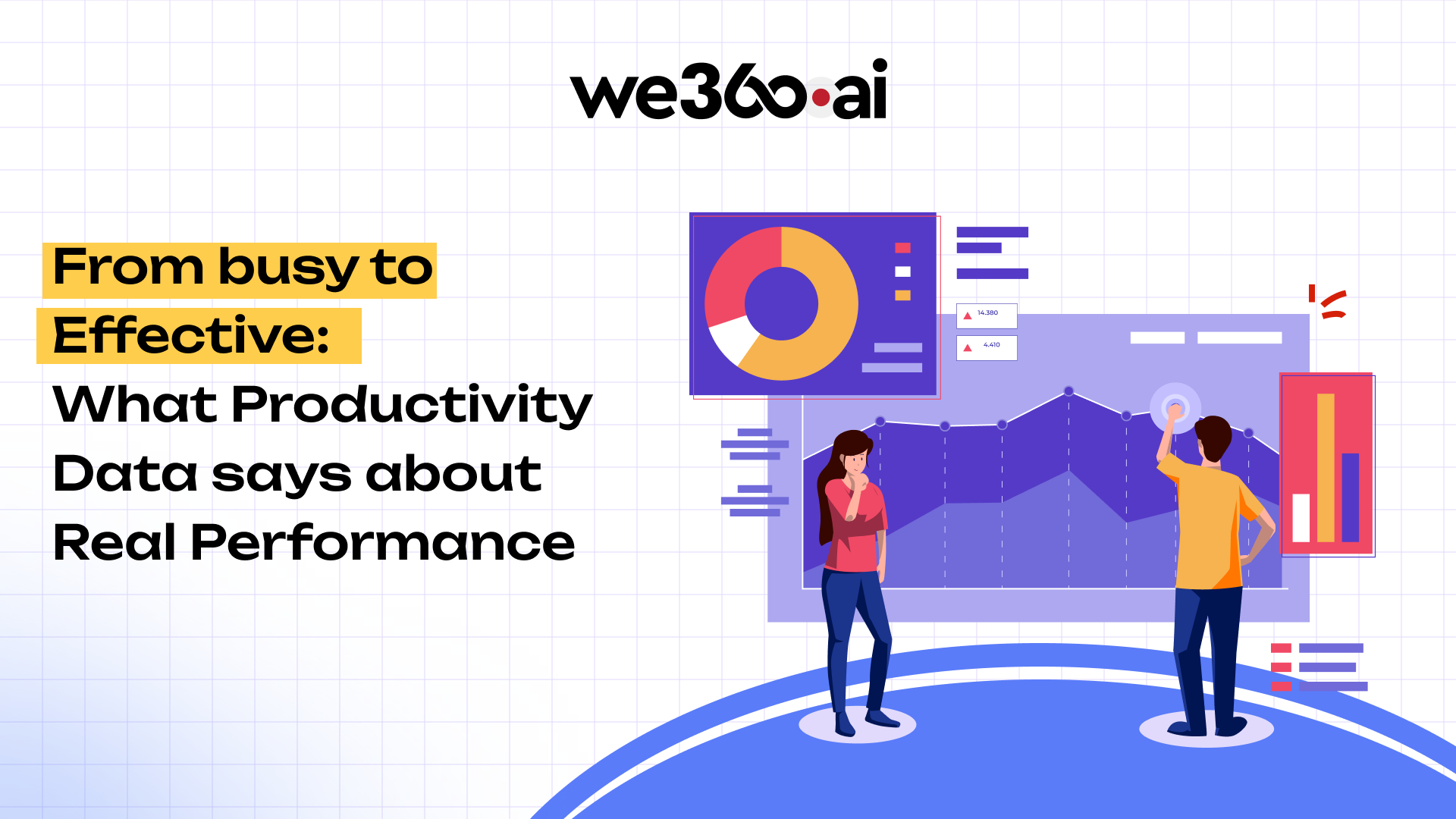The modern workplace is experiencing a shift towards remote and hybrid work setups.
There are many benefits to hybrid working. Apart from keeping people safe from the deadly virus, it also gives people flexibility and freedom . In addition, it helps organisations to save up on their capital infrastructure.
However, the shift has a new set of challenges. One of those is the changing face of workplace productivity management & employee monitoring system. Ever since the organisation has switched to different modes of working the average workspace productivity has fallen by 60% .
With work-from-home arrangements, it becomes harder to track or coach employees on how to remain productive. Some organisations have turned to Employee Monitoring Software & productivity monitoring software as a solution for their falling productivity. However, most likely employees don’t encourage the idea of employee monitoring system, it is mostly considered as micro management.
On the Contrary EMS does not micromanage your workspace but it adds onto your productivity . And here are some practices for effective use of productivity Monitoring software & employee monitoring system:
Set Boundaries and Expectations
Many employees fear that employee monitoring software & productivity monitoring software will invade their privacy since some software may be able to take their data from their gadgets.
The solution is to set these clear boundaries. Some monitoring software & employee monitoring system allows employees to opt out of recording when they are on personal time. Give your staff that control and encourage them to open personal data and accounts during their off-hours. Ensure staff that data privacy will be maintained strictly.
Communicate the Benefits of Monitoring Software
Even if an organisation has opted for the best employee monitoring software or productivity monitoring software, still lack of confidence could be the demise of a productive virtual workplace. Managers can combat this by regularly talking about the benefits of monitoring software. So just what benefits does software for employee tracking have?
- Productivity
When employees are functioning on optimum productivity, there’s greater fulfilment on their part. Employees are part of an organisation and they don’t complete their task sheet to get paid but they want to be content with their work. With productivity monitoring tools in place, they’re in a better position to achieve that.
- Personal security
Contrary to most popular beliefs, productivity monitoring software helps block out malicious content and people that could infringe on staff’s personal data and privacy—productivity monitoring software filters out phishing sites and scam emails.
- Guidance and evaluation
Managers can use monitoring software to evaluate and guide staff to give pointers on how to help them improve their output and performance.
These benefits are primarily for employees. With the employee monitoring system you implement, show your employees they're part of the winning team.

Measure Output Not Hours
The goal of using monitoring software should be maintaining workplace discipline, not micromanaging staff. Hence, companies should measure people’s results and output and not hours.
For instance, when an organisation is hiring people, we ask questions like “where do you see yourself in next 5 years?” or “what work experience do they have?” That’s because we hire them based on what they can deliver, not how many hours they’ll spend at work.
We need to understand the benefits of employee monitoring system over logged hours. It encourages excellence over effort, teaching staff to focus on getting things done well and fast. Secondly, it lowers or eliminates the feeling that supervisors just want to know what you’re doing. Workforce do not wish to be monitored. Gradually, it lowers morale and trust. Instead, focus on monitoring output.
Express Gratitude
One of the best practices for monitoring hybrid workers is to show how grateful you are to have them as your employees, especially at the initial stage of implementation. It will take time for them to have it as an out-of-mind task in the day-to-day. So don’t push them too hard. Organisations should also practice positive reinforcements such as rewards and appreciation.
Set Break Times
Breaks are unproductive, is a myth. On the contrary, giving people ample time to rest and recuperate is vital to the company and team productivity. This rule doesn’t just end with giving weekends off and paid leaves. It also applies in taking short breaks in the day can actually lead to more workday productivity.
Why do employers productivity monitoring software or employee monitoring system work ? It’s because we want them to be the best versions of themselves. Of course, that’s only possible when they aren’t burnt out or exhausted. So keep breaks throughout the day for them to pace themselves.
Morale Matters at Work
Studies state that the productivity of 72% of employees doesn’t get affected by productivity monitoring software. But it can still affect morale, and that matters. So don’t only aim for compliance. Strive to gain buy-in. This way, one can achieve objectives faster and with fewer issues and push-back.








.png)
.png)









